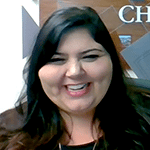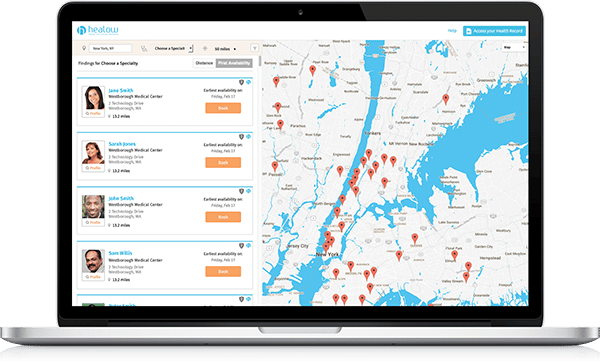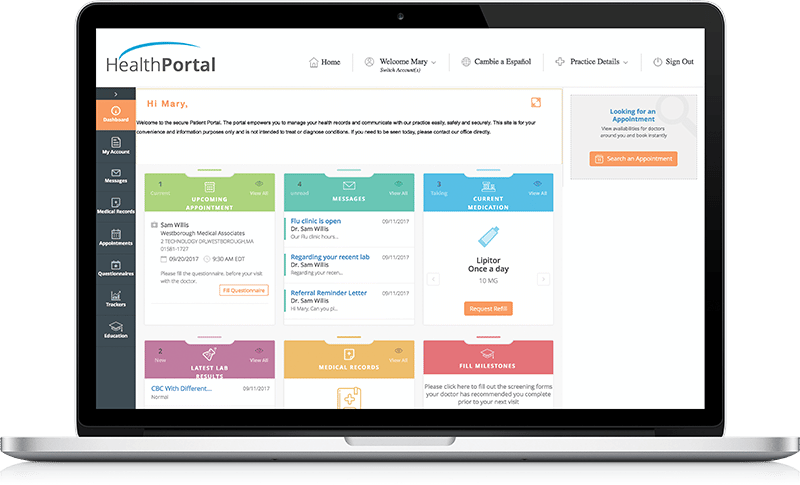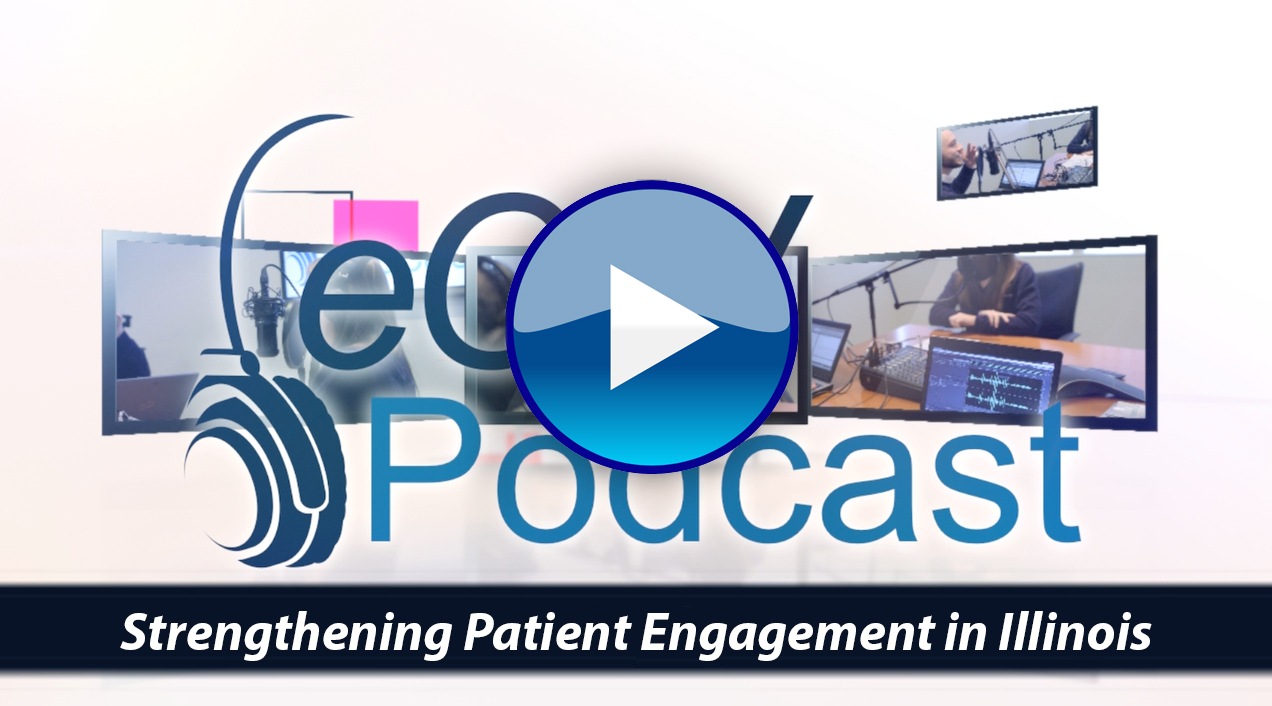Published on Monday November 26, 2018
Founded in 1929, the Christie Clinic provides comprehensive healthcare services to thousands of patients through more than 20 locations in Champaign, Illinois and surrounding communities in East-Central Illinois. They have successfully implemented a full suite of Patient Engagement tools to improve access to the more than 35 specialties they offer. More than two-thirds of the clinic’s 180 providers use healow Open Access® for online appointment booking, and many patients have access to their records through the MyCare Patient Portal, supported by a help desk where even senior managers take a turn interacting directly with patients.
“Here at Christie, we are all about the patient. We want our patients to get what they need while they are at their appointment. If that doesn’t happen, we want them to have easy access to our providers to ask questions that they forget to ask in their appointment, to be able to refill their prescriptions and not have to sit on hold for 15 minutes.”
Monica Samii, EMR Informatics Analyst, Christie Clinic

Topics From This Episode
healow Open Access®
Christie Clinic is making extensive use of healow Open Access® for online booking of appointments. More than 120 of the clinic’s 180 providers, across 35 specialties, are using Open Access, which can help reduce no-shows and gives patients the convenience they want — while the practice retains control over its scheduling. One provider uses Open Access to make sure that he sees at least 40 patients each day. And the clinic’s allergy department recorded 250 appointments through Open Access in just one month.

Patient Portal
At Christie Clinic, staff take Patient Engagement seriously. Giving patients online access to their health records and lab results is a great idea, but it only works if those patients have the training they need. At the suggestion of the practice’s COO, Christie Clinic established the MyCare Patient Portal healow Help Desk, where a live staff member meets individually with patients to train them in how to log in and use the Portal.

Complete Staff Training
Christie Clinic makes their Patient Engagement efforts an integral part of every department. Senior management, including department heads, take regular turns staffing the MyCare help desk. That not only sends a strong message to patients that the organization cares about them, but gives those managers firsthand understanding of practice workflows, and yields ideas they take back to improve the operation of their departments.
Adam Siladi: The evolution of healthcare technology today is not just limited to what happens inside the doctor’s office. In fact, the patient is playing a bigger and bigger role as tools and technologies provide the patient with more capabilities to interact with the office on a regular basis. And one of those things, one of those tools, is the ability to book appointments online from the convenience of their home. And here to talk with us about that today is Monica Samii, EMR Informatics Analyst at Christie Clinic, a multi-specialty group in Central Illinois. Monica, thank you so much for being with us today.
Monica Samii: Thank you so much for having me.
Siladi: So, Monica, why don’t you tell us a little bit about who you are, and tell us about Christie Clinic, as well.
Samii: I’d be happy to. I am an official townie of Champaign, Illinois! I’ve lived here my entire life, and I’ve always been a patient at Christie Clinic. I started working here eight years ago in central registration, and during the conversion to eClinicalWorks they asked me to be one of the certified trainers on the PM side, and from there it just kind of morphed into Patient Engagement. And I have been working very closely with some members of the eClinicalWorks team on Patient Engagement and getting that up and running here at Christie Clinic. At Christie we have over 180 providers. We are a multi-specialty clinic, and we also have an affiliation with both of the hospitals here in town.
Siladi: And I’m sure they’re glad to have an eight-year veteran like yourself there at the helm of their Patient Engagement. So why don’t you tell us a little bit about how does Patient Engagement fit into your strategy?
Samii: Well, here at Christie of course we are all about the patient. Internally, we want our patient to get what they need while they are here at their appointment. If that doesn’t happen, we want them to have easy access to our providers to ask questions that they forget to ask in their appointment, to be able to refill their prescriptions and not have to sit on hold for 15 minutes. And using Patient Engagement is the way we can do that.
Siladi: Certainly a key feature there, you know, improving access for patients is one of those major focuses of a lot of those big programs out there, MIPS, Patient-Centered Medical Home, things like that, all focus on improving access for patients. And it sounds like you’re going to be able to do some of that. Now eClinicalWorks, of course, offers an entire platform, which we call healow, which handles our Patient Engagement. So, Monica, which healow tools are you using, or your patients, I should say, which tools are your patients making use of over there at Christie Clinic?
Samii: Sure. Of course, we have over 180 providers, and of those providers, over 120 are on Open Access, so healow Open Access®, which is pretty fantastic, I think. So we do utilize Open Access online scheduling. We also, of course, have the Patient Portal. We refer to that here at Christie Clinic as the MyCare Patient Portal. Of course, the healow app. We do some things with custom campaigns, and then, coming soon in December we are going to start using the Kiosk, as well.
Siladi: Very exciting, very exciting. And of course, for those who don’t know, Open Access gives your patients the ability to see available appointments, request available appointments from your office, and try to get there on the schedule on terms and times that work for them. Now, for your patients that are using those healow tools, and using that online booking, what kind of metrics are you keeping track of? What kind of numbers are you looking at?
Samii: Basically, how many requests come in, how many we are booking, how many we are declining, and then of course on the Open Access side, how many appointments are actually being requested at a certain date and time. And we grow every month, I mean, it’s pretty cool. We did start tracking our metrics just this January, so from January to August — because I just got the amazing numbers from my girl, Kerri Domingues at eClinicalWorks, she helps me a lot! — I just got numbers through the month of August, and we are always on an upturn, numbers are always going up.
Siladi: Good, so you see the engagement is increasing, that more people are interested in this Open Access online booking type of feature?
Samii: Absolutely. One of the cool things we were able to do with Open Access is we have an allergy department where patients come in all the time to get their allergy shots, and they would just walk in, and if the provider wasn’t there in order to help administer the shot they would have to come back at another time. If a nurse wasn’t present, they would have to come back at another time. With the help of Online Access, we were able to create a fake, or dummy provider if you will, called Christie Clinic allergy provider, and now patients go online to book their appointments when they want to come in for their allergy shots, and in the past month we had 250 Open Access appointments.
Siladi: Wow, 250 in one month, that’s quite a lot there.
Samii: It’s a great number.
Siladi: That sounds like quite an accomplishment, for the reason that, you know, a lot of times you talk to providers about something like Open Access scheduling, and they are kind of hesitant about that. So, why don’t tell us a little bit about how you got to where you are. How did you get the providers to buy into this idea of Open Access? Why did you see that it was important for you?
Samii: First off, when you walk in and tell a provider “Hey, we’re going to let anybody in the world have access to your schedule!” they kind of freak out a little bit, which is warranted, totally fine. However, once you explain what a patient satisfier it is, once you explain that yes, your receptionist or scheduler has final control over what is put onto your schedule, doctors come around pretty quickly. One of my favorite providers here at the clinic sees no less than 40 patients a day. If he sees less than 40 patients, he’s an upset man. He wants to see his patients! And right now he is complete Open Access. He has 10-minute Open Access appointment times, and the reason it works is because of his staff. Truly, the providers feel no difference in his schedule whatsoever, and that is all because of how his nurse can handle his schedule for him. She can move appointments, she can put blocks where necessary, she can open up where necessary, where he is happy and our patients are also happy because they get to come in and see their provider when they want to.
Siladi: So, we call it Open Access, but from what you’re saying, there’s a lot of control there over how the schedule operates, over even once things are booked you can move things around.
Samii: Yes.
Siladi: How do you configure that? How do you set up those controls on a schedule?
Samii: Well, those are the tools that are included with Open Access. So, we have different visit durations for Open Access. And basically we structure their schedule that way. So, one of our providers, she was actually — came on early as one of our Open Access providers in this process. She was a new mom of twins, and she wanted to be able to structure her schedule so that she could take breaks during the day when she needed to. So, truly, if it doesn’t show up online, there’s no way that patient can get in to come in to be seen, which, of course, it’s nice to have that control. So that’s how we utilize that. Now, we also have providers who don’t care, just open up my schedule, they can come in whenever they want to! And then, of course, we have still that final little piece where that appointment gets booked onto the schedule. But that’s how it works here at Christie.
Siladi: And you had a shout-out there to someone here at eClinicalWorks
Samii: Yes.
Siladi: Who is that person, and what do they do for you?
Samii: That’s Kerri Domingues. She is truly a life-saver. Right now we’re actually working together on what we are calling online reservations for our convenient cares. We have four different locations for convenient care, and she has been instrumental in helping us get that set up. And, of course, anytime I have a question about healow or Open Access, she’s been absolutely fantastic in helping me out with that, with everything.
Siladi: Great! So, you have a Patient Engagement representative, and it sounds like she’s working very closely with you. For anybody who’s using our healow tools, you do actually get your own Patient Engagement representative that will work with you and help you to be successful, just like they’ve helped Monica over at Christie Clinic to be successful. Now, one thing we haven’t quite talked about, Monica, yet, is the patient. We talked about the provider’s experience. We talked about your experience. What about the patients. Now, you know, this is something that a lot of groups worry, right? You know, they turn on the Portal and patients don’t use it, or they have questions. I think you said that you’re doing something over there at Christie Clinic which is pretty innovative, which helps you to make sure that your patients have a great experience with the healow tools.
Samii: Yes. Our COO, actually, came up with this idea. And we made it happen. It is called, and sorry for the very long title, but it is, the MyCare Patient Portal healow Help Desk. And it is a help desk for our patients. At our primary care facility, we have an actual person, Monday through Friday, 8 AM to 5 PM, sitting there, waiting to help our patients. And how that works, is once they see their primary care provider, the provider refers them down to the desk so we can get them set up with the MyCare Patient Portal. It’s also where we can show them how to use online scheduling, our Open Access, as well as download the healow app and, of course, link any family members they’d like to have.
Siladi: And are you sitting at the desk right now? Is that the healow help desk right there?
Samii: I’m not sitting at the desk right now! We have really pretty healow blue — it’s not Tiffany Blue, it’s healow blue — signs that say “I Teach Support” “healow Support” “MyCare patient Portal Support”, for the patient.
Siladi: So, who’s down there working the desk from day to day? If you’re not there right now, who is there at the desk?
Samii: Well, my main job is not to sit down there at the desk, although I love being with patients! It’s actually, our COO, Jason Hirsbrunner, decided that our management team was going to man the desk. We have several clinical managers here at Christie Clinic, as well as managers of their own departments, and they all take a shift, two to four a month — four-and-a-half hour shifts — to sit at the desk. So, even the COO, our CFO, our IT director — they all take their turn at the desk. Being able to sit face-to-face with the patient, and to be able to help them, save them time at home, tell them they don’t have to sit on hold for 15 minutes to get their refill request. That you can utilize this tool to help you, that we can link your family members to your account so that you always know what medications your wife is taking if you need them. Or if you need to look up immunizations for your kids, you know what they are. And, from that, our managers and our upper management team have created some really cool ideas to take back to their own departments to help implement Patient Engagement.
Siladi: Well, that sounds very innovative of you, and actually, you know, it echoes back to a lot of the things that we hear from those very same programs we were talking about before. Patient-Centered Medical Home places a lot of emphasis on buy-in into the program at all levels. And it sounds like that’s what you guys are doing here with your Patient Engagement strategy. It’s great to hear that everyone’s taking part, and helping the patients out and getting them the information that they need. And like you said, they get that first-hand experience of what it’s like to help the patient, or to help them solve that problem. So, I’m sure it feeds into whatever they are working on there, as well.
Samii: Yes.
Siladi: What has the patients’ reaction to the help desk and to healow in general been?
Samii: You know, it’s been really great. I was helping out one of our managers at the desk just the other day, and a new family to Christie Clinic came in. So, it was mom and dad, and they have four kids. And it took almost an hour, but we got all of them hooked up on the Portal. Mom downloaded the healow app, and everyone, all four of her children and herself, of course, are now downloaded on her healow app, and she is so thankful, because it’s not something we have a lot of here in this community. So, she was very, very excited to be able to have that access at her fingertips whenever she needed it.
Siladi: So, you’re really working there to set your patients up for success. You’re making sure that they know how to use the tools. And I’m guessing you have much more active patients on those tools since they get that hands-on interaction, the hands-on experience with healow and all of the options that are available for them.
Samii: Yes, over half of our Portal users that have been signed up for the Portal, over half of them actually use it, which I think — well, it may not sound like the greatest number ever, but I think it’s a great number! Because I don’t know how many things I’ve signed up for and I’ve never used. So, I think that’s a pretty good metric to have.
Siladi: Now, not everybody has the resources to set up a dedicated healow help desk, or MyCare Patient Portal healow Help Desk as you called it. And for those offices out there that don’t have as many resources at their disposal, eClinicalWorks actually offers some services to help out. We have a healow Patient Relationship Management consulting service that will go out to various offices and help them get set up and get going with their Patient Portal. So, we train their offices on how Patient Portal works. We even have people sit in the waiting room and talk to their patients and help enroll the patients. It’s very similar to what you were describing there at the help desk. So, that can be a way for practices who are a little bit smaller to also take advantage of the tools that are available through healow, educate their patients, and educate their staff and get them set up for success. Monica, what is next for Christie Clinic? What are you guys looking ahead to now that you’ve got this help desk in place?
Samii: Well, we’re going to add a second help desk at one of our specialty clinics, right in the heart of downtown Champaign. So that is on the horizon. Also, we are opening a new medical office building in December, and our physical therapy patients will have the opportunity to use Kiosk. And lastly, I had mentioned this before, but convenient care is starting October 1. Our four locations will have Open Access, so same-day appointments available for our convenient cares.
Siladi: Excellent.
Samii: So that’s what’s next.
Siladi: That sounds like a lot on your plate. So, we’ll let you get back to it, and we’ll wish you the best of luck. And, Monica, thank you so much for taking the time to be with us and speak with us here today
Samii: It’s been a pleasure, thank you.
Siladi: If you’d like more information about any of the topics that we discussed on our episode today, you can check out my.eclinicalworks.com for documents and videos about all sorts of things that eClinicalWorks offers. You can also reach out to your Strategic Account Manager for more information and for assistance on anything you may be interested in. Furthermore, we have more eClinicalWorks Podcasts available to watch on YouTube, iTunes, and my.eclinicalworks.com. So, keep an eye out for future episodes where we’ll be discussing more topics about what matters most to you in healthcare. Thank you so much for watching. I’m Adam Siladi. We’ll see you next time.






